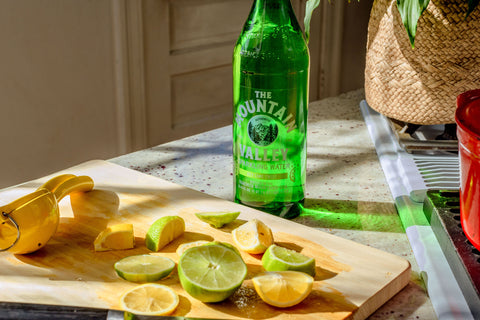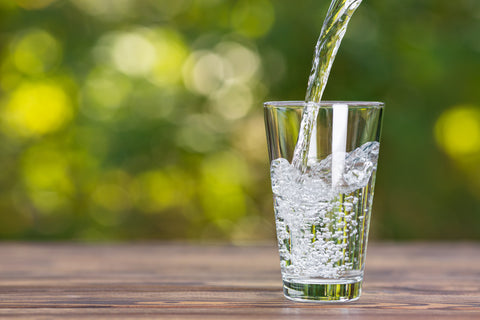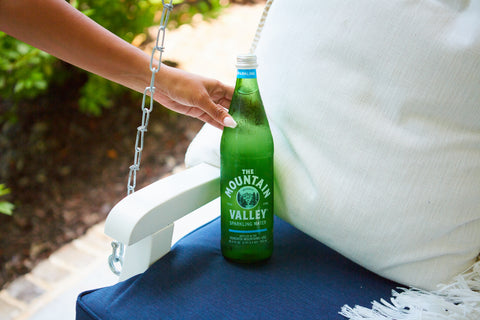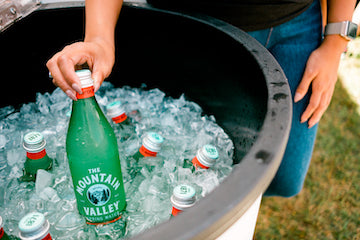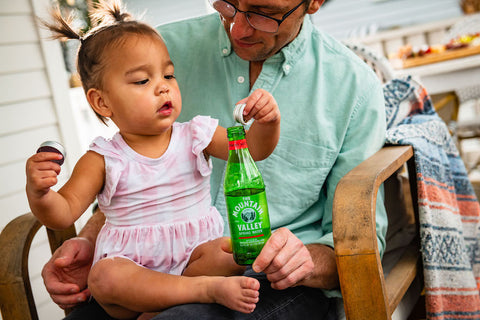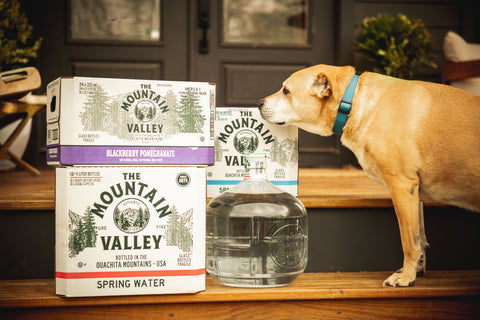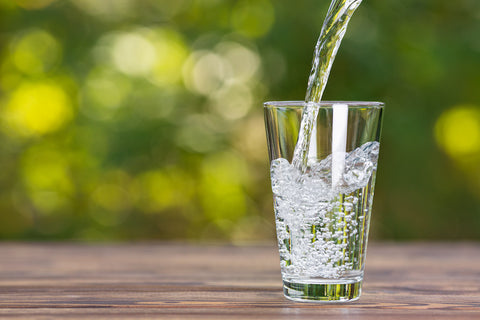
When thinking of refreshingly delicious water, a few words pop to mind: crisp, clean, and above all, pure.
At Mountain Valley Spring Water, the purity of our all natural, spring-fed source is paramount. Tucked into the leafy heart of the Ouachita Mountains in the southern United States, our source is our lifeblood, and we do everything in our power to protect it and our award-winning water.
But when it comes to delicious, refreshing water, “pure” is something of a myth. Water is rarely just water. Be it saltwater, tap water or even naturally sourced spring water, the water you bathe in and the water you drink is laced with particles and molecules aside from H2O.
This is where TDS come into focus.
Total dissolved solids, or TDS, is a measure of the number of dissolved particles in a volume of water. TDS can be organic and inorganic, helpful and harmful. Measuring the levels of TDS in drinking water offers a glimpse at overall water quality — but it’s only a glimpse.
TDS alone do not tell the full story. But we will give it a try.

TDS in water — What are total dissolved solids?
What are TDS? Total dissolved solids can be detrimental, but they can also be healthful.
Water is a solvent; it’s capable of dissolving other substances. This means as water passes through pipes, treatment facilities, or layers of earth into natural springs, the water dissolves some of the solids it touches and takes on those particles. TDS in drinking water can include organic and inorganic materials; everything from lead, mercury and pesticides to calcium, magnesium and even potassium.
While the Environmental Protection Agency regulates contaminants in drinking water (harmful dissolved solids such as arsenic and barium), most TDS are considered secondary standards. The EPA offers suggested guidelines for these secondary dissolved solids but not mandated regulations. Secondary dissolved particles include aluminum, chloride, iron, zinc and more.
The EPA’s guidelines recommend no more than 500 mg of TDS per liter of drinking water.

TDS in water — Where do TDS come from?
TDS find their way into drinking water via man-made and natural sources.
Agricultural runoff is a common way for pesticides and herbicides to enter water systems. Old plumbing can introduce lead into water, and chlorine is often used by water-treatment facilities to kill bacteria and viruses.
But TDS can also find their way into water naturally, as is the case with Mountain Valley Spring Water. The water you sip from our emerald-green bottles fell from the sky some 4,000 years ago as rain and snow. Over the centuries, this water filtered deep into earth of the Ouachita Mountains where it pooled in granite-lined aquifers. As those natural vessels filled, pressure pushed some of that water back to the surface, forcing it through layers of quartz, limestone and Ordovician marble and into the springs for which this part of the country has become famous. As Mountain Valley Spring Water passes across those natural striations, it picks up trace minerals including magnesium, calcium and potassium.
These are the TDS you hope for in drinking water; the TDS that make water taste good and that make it great for your health.
According to our 2021 Water Quality Report, Mountain Valley Spring Water contains 67 mg/L of calcium, 7.1 mg/L of magnesium and 1.3 mg/L of potassium. All told, Mountain Valley has a TDS level of 220 mg/L with a slightly alkaline pH of 7.3.

TDS in water — What they do …
In the case of Mountain Valley Spring Water, a few all-natural TDS can go a long way to a healthier more hydrated life. These trace minerals give Mountain Valley its signature, refreshing and award-winning flavor. They create a natural roundness to our water, something humans cannot replicate, although many bottled-water companies have tried.
These trace minerals are also good for your wellbeing.
Magnesium in drinking water has been linked to heart health. Calcium is critical for strong bones. And potassium supports healthy blood pressure.
As we’ve discussed, however, not all TDS are equal. A high concentration of TDS, generally more than 500 mg/L, can create bitter flavors and unpleasant smells in drinking water. While many TDS are harmless, certain substances can have serious negative effects on one’s health.
“Consuming water with even low levels of arsenic over a long time is associated with diabetes and increased risk of cancers of the bladder, lungs, liver, and other organs,” according to the Minnesota Department of Health.
Lead in water can lead to brain and soft-tissue damage. High levels of copper in water can result in nausea.
In 2003, the World Health Organization convened a panel of tasters to determine the palatability of drinking water in relation to its TDS level. The tasters rated water as follows:
- “Excellent” — water with less than 300 mg/L of TDS
- “Good” — water with 300-600 mg/L of TDS
- “Fair” — water with 600-900 mg/L of TDS
- “Poor” — water with 900-1,200 mg/L of TDS
- “Unacceptable” — water with more than 1,200 mg/L of TDS
At 220 mg/L of TDS, Mountain Valley Spring Water falls squarely into the WHO’s “excellent” range. It’s important to note that this is a case where less isn’t more. When it comes to palatability, some TDS are necessary.
As the WHO panel stated: “Water with extremely low concentrations of TDS may also be unacceptable because of its flat, insipid taste.”

TDS in water — Why you need a few …
Nobody wants to drink “flat, insipid” water.
If you’ve ever tasted distilled water, which is 99.9% pure water, you’ll know how off putting and unrefreshing it is. Water needs trace minerals to be palatable, to keep you drinking and keep you hydrated.
Dissolved solids that have the biggest positive impact on water’s flavor include magnesium, calcium, sulfate and bicarbonate. Waters with these trace minerals, as well as waters with a slightly higher pH, were judged as tastier and more flavorful in a 2012 study.
While many bottled-water businesses try to infuse their filtered waters with these minerals, the flavor just isn’t the same.
This is why Mountain Valley Spring Water is the most award-winning bottled water brand in the United States. Our wholly natural spring water comes by these trace minerals the old fashioned way: by Mother Nature, over the course of millennia. The result is a simply delicious, wonderfully flavorful water that may not be “pure” in the strictest sense of the word, but that is purely refreshing all the same.
Taste for yourself. Get started with Mountain Valley Spring Water office or home delivery by clicking here.



